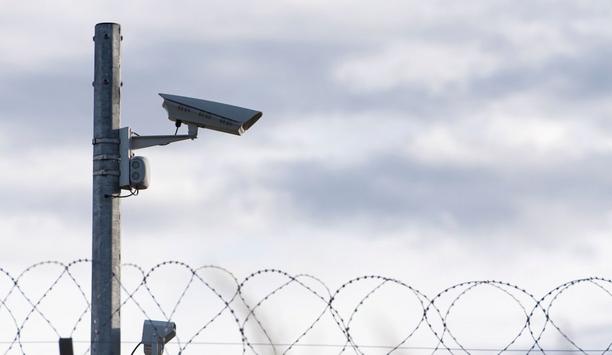 |
| More attention needs to be given to wireless security technology |
Although wireless technology -specifically radio - has been used in the security industry since the 1980s, penetration rates in Europe and particularly the UK are still lower than one would expect. When one considers the way that wireless solutions are embraced in so many other areas of our daily lives, it is hard to see why security installers, in addition to chief security officers and risk managers, are slow to adopt this technology when it comes to securing their premises against intrusion. To understand this better we need to rewind a few decades.
Firstly, a lack of education around wireless security was to blame for scare stories that alleged radio frequencies used to deploy wireless intruder alarms were susceptible to jamming or interference from devices such as mobile phones or walkie-talkies. The perception was that radio was risky and if a police frequency could be jammed or tapped into, then surely a residential or low-end commercial device could be open to compromise. Moreover, it was also assumed that radio systems were also much more prone to false alarms than traditional wired alarms as radio waves from any number of sources could interfere with the system and trigger an alert.
To counteract this, a delegation of representatives from the security industry and a representative of the Association of Chief Police Officers (ACPO) travelled to the US to see radio systems in operation and to better understand that this technology was reliable and trustworthy.
It was assumed that radio systems were much more prone to false alarms than traditional wired alarms |
In addition, the British Security Industry Association (BSIA) worked to define and enforce a set of industry standards to encourage greater trust in the technology, and buy-in from interest groups such as police and installers in the UK. The organisation successfully implemented BS 6799, which graded radio systems from one to six, as well as mandated that an installer had to be trained and certified by a manufacturer before installing a system. The standard has been instrumental in helping to build stability in the space and promote wireless uptake among industry influencers and installers, and much of it has now been incorporated into the new European standard EN50131.
Yet in spite of increased education and a robust industry standard, the penetration of wireless security solutions in Europe is only 30%* and even less in the UK. Innovations in radio technology and changing demands in the security marketplace mean that more and more end-users are considering wireless, and security installers need to make sure that they have the expertise and equipment necessary to provide the service.
Benefits of wireless technology in security applications
The benefits of wireless technology are compelling. Often, wired security systems simply cannot be adapted to deliver the kind of protection that any standard risk assessment demands. An inability to install cabling in a property owing to any number of architectural or design features can lead to inadequate security alarms being installed and leave clear loopholes open for criminals to exploit. Wireless technology offers a flexible and scalable alternative that, can ensure that a premise is secured as comprehensively as possible, whether it be as a standalone or in tandem with wired solutions. Furthermore, wireless solutions are particularly useful when it comes to temporary building work, a time when many locations are vulnerable to crime. Instead of leaving premises open to compromise when building work is taking place and wired systems are disrupted, wireless intrusion detectorsattached to temporary partitions or supporting walls can be a very effective way of combating unwelcome intrusion. This would be impractical using wired technology.
 |
| Wireless technology is particularly useful building construction sites which are vulnerable to crime |
Two-way radio technology has redefined the debate around wireless, and added extra important benefits to its armoury. The technology ensures that a panel is not only transmitting a signal to a detector to check it is still operational; the detector also sends a confirmation signal back to the panel. This enhances peace of mind and the reliability of the solution. In addition, instead of a panel waiting the sometimes up to 54 minutes before "self-reacting" - alerting the user to a suspected fault with the system - after a missed signal from a detector, alarm systems can be programmed to monitor for and highlight potential problems at much shorter intervals. If a panel asks for a confirmation signal from the detector at random intervals but a minimum of every eleven minutes for example, it ensures that any fault or problem with the alarm is quickly identified and dealt with, and no property is left unprotected (and unaware of it) for up to an hour as a result. This important innovation will help to change perceptions of radio and encourage greater uptake.
Battery life is an important area of innovation when it comes to wireless. Previously wireless detectors used batteries that were bespoke and expensive to buy, in addition to having a short lifespan. In the residential space in particular, for a customer looking at the total cost of ownership involved in maintaining an alarm system, constantly replacing expensive batteries had the potential to significantly affect his/her purchasing decision. In recent years, detectors have been redesigned to run on lower-cost and generally available lithium batteries, reducing overheads and increasing power efficiency. Now 5 years battery life is easily obtainable. In addition the cost of replacements is significantly less. These changes will make it easier for the end user and support the installer when making the business case for the technology.
In recent years, detectors have been redesigned to run on lower-cost lithium batteries, increasing power efficiency |
Also significant in the debate surrounding the uptake of wireless are panic buttons. Increasingly, in schools and hospitals, a discrete wireless panic transmitter is clipped to members of staff to safeguard them against attacks. Using radio, detectors communicate with the main control panels, and if the detector is activated by the employee, an alarm will sound instantly and the person at risk identified. Wireless panic buttons also have residential appeal, particularly in the summer season when more and more outdoor activities are taking place. By keeping a button close to them in the garden, homeowners can ensure they are protected at all times. As panic buttons grow in popularity, so too will increased adoption of wireless.
Wireless security systems should complement wired systems
In summary, wireless technology is more accessible than ever for specifiers and installers, and more important than ever to the end-user. But should wireless replace traditional wired systems? The answer to that question is ‘no'. Wired systems are both integral to the delivery of security solutions, and also make up the majority of systems that exist in the UK and Europe today. Instead, the industry needs to consider the benefits of going hybrid. Most manufacturers now offer a suite of products that allow interoperability between wired systems and wireless detectors empowering customers to add wireless components that compliment their existing solution.
A totally wired or totally wireless system is often unsuitable for every deployment, but a combination of the two will help customers to satisfy even the most complex of security requirements. Installers cannot afford to miss the boat.
 | Tony Makosinkski Honeywell Security Group |
* Source: IMS Research



















